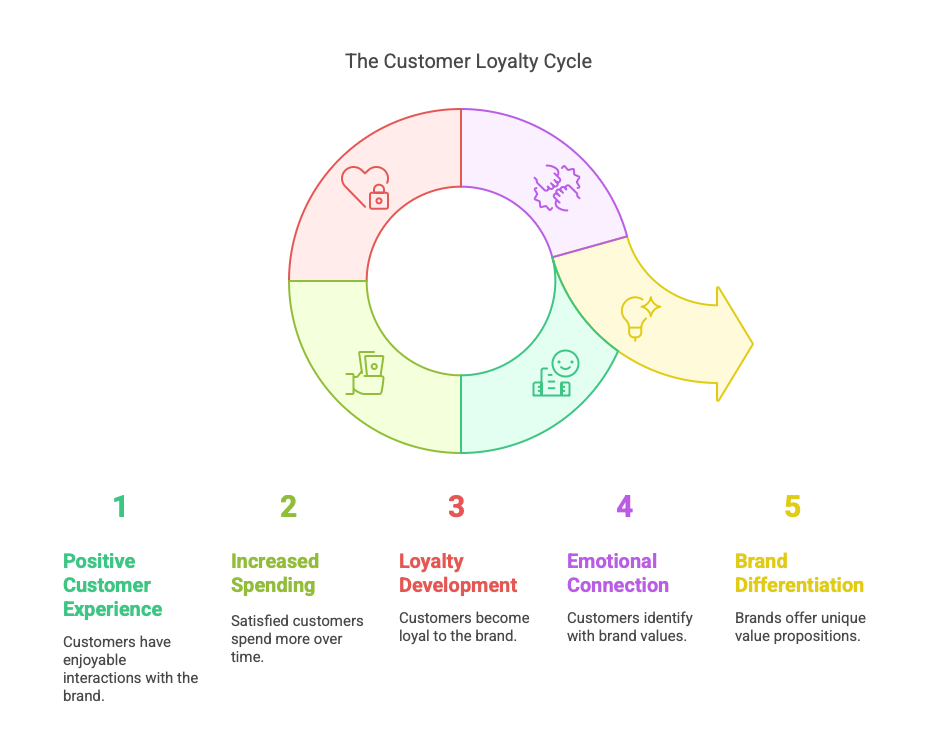In today’s competitive marketplace, customer loyalty is the ultimate goal for businesses. It drives repeat business, reduces one off visits , and transforms customers into brand advocates. Sampson Lee, founder of Global CEM, recently pointed out that service and operations teams focus on customer satisfaction, while branding and marketing teams aim for brand differentiation. Though these strategies seem distinct, they are complementary approaches to achieving a common goal: customer loyalty.
The Value of Customer Satisfaction
Customer satisfaction plays a crucial role in fostering loyalty. When customers have a positive experience, they are more likely to return and continue doing business with a company. Satisfied customers also tend to spend more over time and are less likely to switch to competitors. Studies have shown that retaining an existing customer is far more cost-effective than acquiring a new one, which is why focusing on satisfaction is essential for long-term success.
Operations and customer facing staff are at the forefront of this effort. By providing exceptional customer care, addressing concerns promptly, and ensuring a seamless experience, these teams create satisfied customers who are more inclined to stay loyal.
While satisfaction is about meeting customer expectations, brand differentiation is about exceeding them in a unique way. In a world of abundant choices, customers are drawn to brands that offer something distinct—whether it is innovative products, a compelling brand story, or a unique value proposition. This is where marketing and branding teams come in.
By creating a strong, differentiated brand, companies can build emotional connections with their customers. When people identify with a brand’s values, purpose, or lifestyle, they are not just satisfied—they are engaged and invested. These deeper connections often lead to higher levels of loyalty and advocacy.
The Synergy Between Satisfaction and Differentiation
While satisfaction and differentiation may seem like separate priorities, they are two sides of the same coin when it comes to driving customer loyalty. Satisfaction creates the foundation by ensuring customers feel valued and that their needs are met. Differentiation builds on that foundation, giving customers a reason to choose your brand over others, not just once, but repeatedly.
When both strategies work together, they generate a powerful cycle of loyalty: satisfied customers are more likely to appreciate your brand’s unique qualities, and a differentiated brand reinforces the emotional connections that keep customers coming back.
The Business Benefits of Customer Loyalty
Investing in customer loyalty offers significant long-term rewards. Loyal customers tend to have a higher lifetime value, meaning they spend more money and engage with your brand for longer periods. They also act as advocates, sharing their positive experiences with others and generating word-of-mouth referrals, which are invaluable for business growth.
Moreover, customer loyalty helps companies weather market fluctuations. In times of economic uncertainty or increased competition, loyal customers are more likely to stick with brands they trust, providing businesses with a stable revenue stream.
In conclusion, both customer satisfaction and brand differentiation are essential for cultivating loyalty. Service and operations teams, alongside branding and marketing teams, must work in harmony to create memorable experiences that both meet and exceed customer expectations. When done right, the payoff is substantial—loyal customers who not only continue to choose your brand but also promote it to others, driving sustainable business success.
Talk to us at Customer Care Insights about how we can help you develop and motivate your staff to create greater loyalty.


